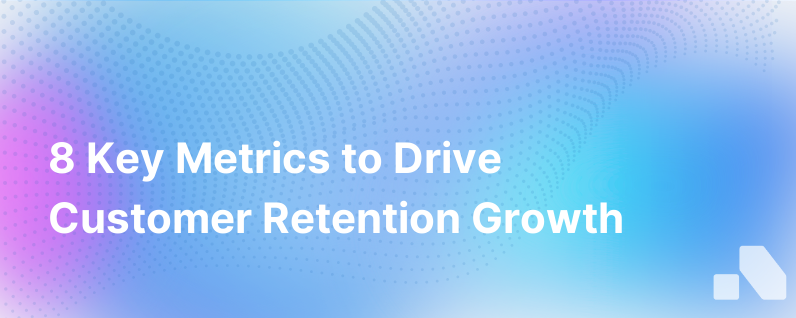
In the competitive world of B2B business, keeping your customers happy is as critical as attracting new ones. This is where customer retention metrics come into play, providing a clear view of your company's performance in maintaining customer relationships and loyalty. Below, we'll delve into eight crucial customer retention metrics every company should be monitoring to fuel growth.
Retaining customers can significantly impact your company's financial performance because it costs less to keep existing customers than to attract new ones. By tracking the right metrics, you can create more targeted strategies to improve satisfaction and loyalty. Here are the top eight metrics to focus on:
Customer Churn Rate
Customer churn rate is the percentage of customers who stop using your service within a given period. Keeping this number low is a sign that your business is maintaining customer satisfaction.
Customer Churn Rate = (Number of Customers Lost During a Period / Number of Customers at the Start of the Period) \* 100Revenue Churn Rate
Revenue churn rate, also known as MRR (Monthly Recurring Revenue) Churn Rate, reflects the percentage of revenue you have lost from existing customers.
Revenue Churn Rate = (MRR at the Beginning of the Period - MRR at the End of the Period) / MRR at the Beginning of the PeriodThis differs from customer churn as it takes into account the revenue impact of upsells and downgrades, not just lost customers.
Customer Lifetime Value (CLV)
CLV predicts the total amount of money a customer is expected to spend on your products during their lifetime. It's one of the most important metrics since increasing CLV is directly tied to profitability.
Customer Lifetime Value = Average Purchase Value _ Purchase Frequency _ Customer Life SpanRepeat Purchase Rate
The repeat purchase rate measures what percentage of your customers are coming back to purchase again.
Repeat Purchase Rate = (Number of Returning Customers / Total Number of Customers) \* 100A high repeat purchase rate indicates that customers are satisfied and loyal to your brand.
Net Promoter Score (NPS)
The Net Promoter Score measures customer satisfaction and loyalty.
Net Promoter Score = % of Promoters - % of DetractorsCustomers answer how likely they are to recommend your service on a scale of 0-10. Scores of 9-10 are promoters, 7-8 are passives, and 0-6 are detractors.
Customer Satisfaction Score (CSAT)
The CSAT score reflects how satisfied customers are with your products or services.
Customer Satisfaction Score = (Number of Satisfied Customers (4-5 Score Response) / Total Survey Responses) \* 100Customers typically rate their satisfaction on a scale of 1 (not satisfied) to 5 (very satisfied).
Customer Effort Score (CES)
CES assesses the level of effort a customer has to exert to get issues resolved, requests fulfilled, or products purchased.
Customer Effort Score = Sum of Customer Effort Scores / Total Number of RespondentsThe easier it is for customers to interact with your company, the more likely they are to remain loyal.
Product Return Rate
The rate of returns can be a significant indicator of either product issues or customer satisfaction.
Product Return Rate = (Number of Products Returned / Number of Products Sold) \* 100A high return rate may indicate underlying problems with product quality or customer expectations not being met.
Keeping track of these metrics provides insights not only into how many customers you're keeping but also into the health of your overall customer base. For example, if your churn rate is increasing, you might need to check on the quality of customer service.
You can leverage advanced platforms like Aomni to assess the impact of your retention strategies with intuitive, real-time dashboards that track these metrics and more. Automated features can help you identify patterns, predict churn, and proactively address issues before customers are lost.
Key Takeaways
When you monitor these metrics closely, you'll gather valuable intelligence to:
- Iterate on products and services based on feedback
- Optimize the customer experience with data-driven decisions
- Understand customer behaviors to provide personalized services
- Increase customer engagement and satisfaction
- Drive strategic initiatives that impact the bottom line
For startups and growing businesses, customer retention is the backbone of sustainable growth. By emphasizing the value of these metrics, you're not just maintaining a customer base, you're building a loyal community that will support your business for years to come.
In conclusion, honing in on metrics like churn rate, lifetime value, and NPS can highlight opportunities for improvement and paths to customer loyalty. Consider these metrics as a dashboard to your business health: indicators that help navigate the complexities of customer relationships. With this data-driven approach, your company is well-positioned to flourish in the marketplace and sustain long-term growth.